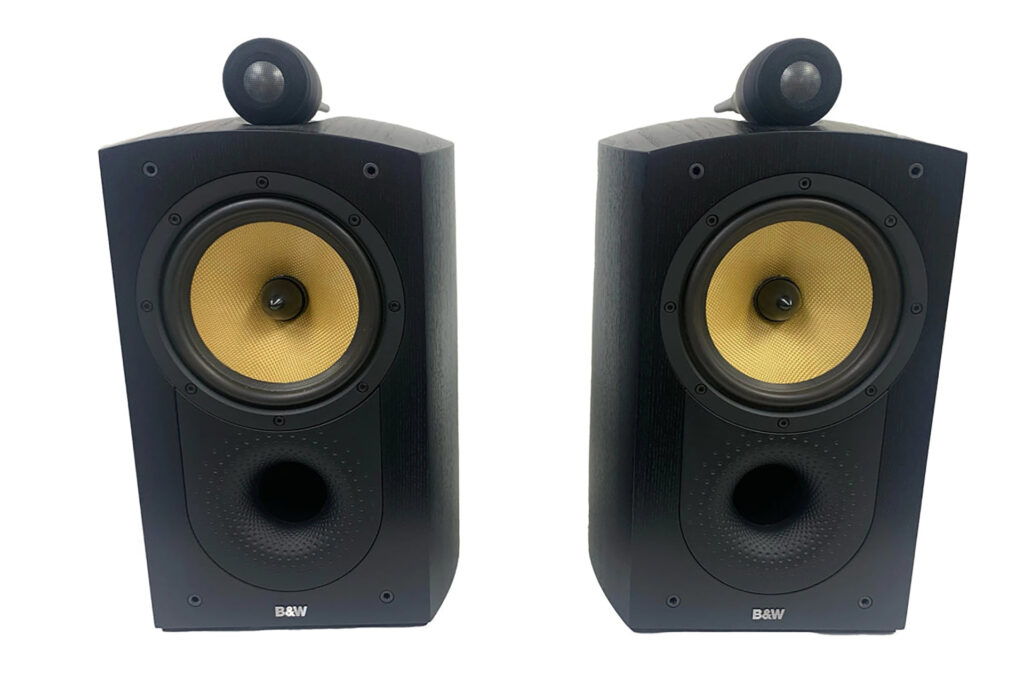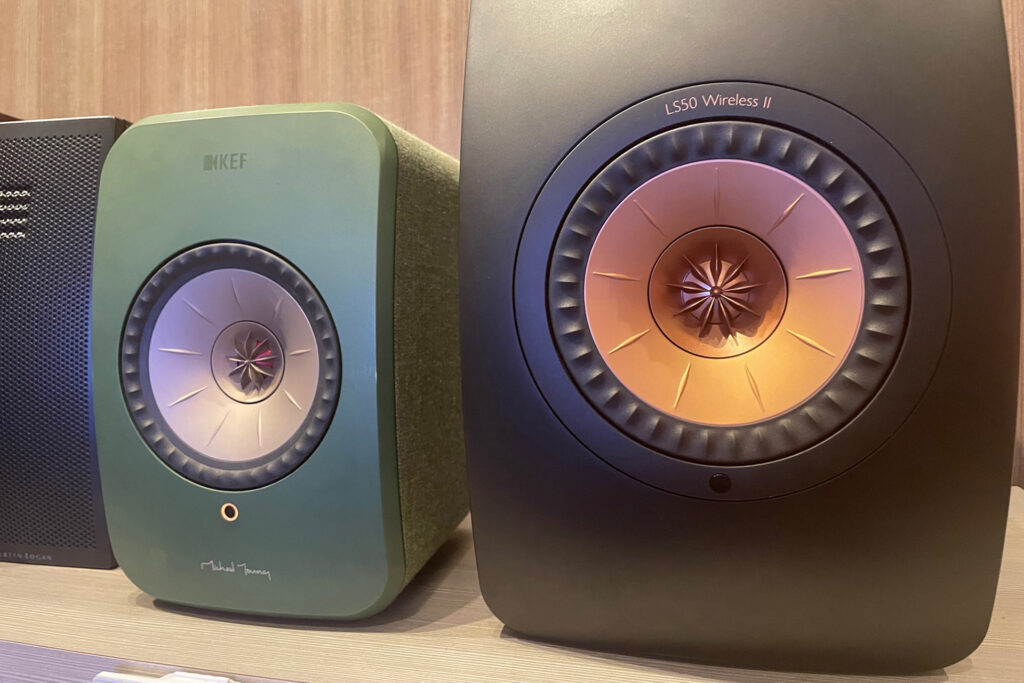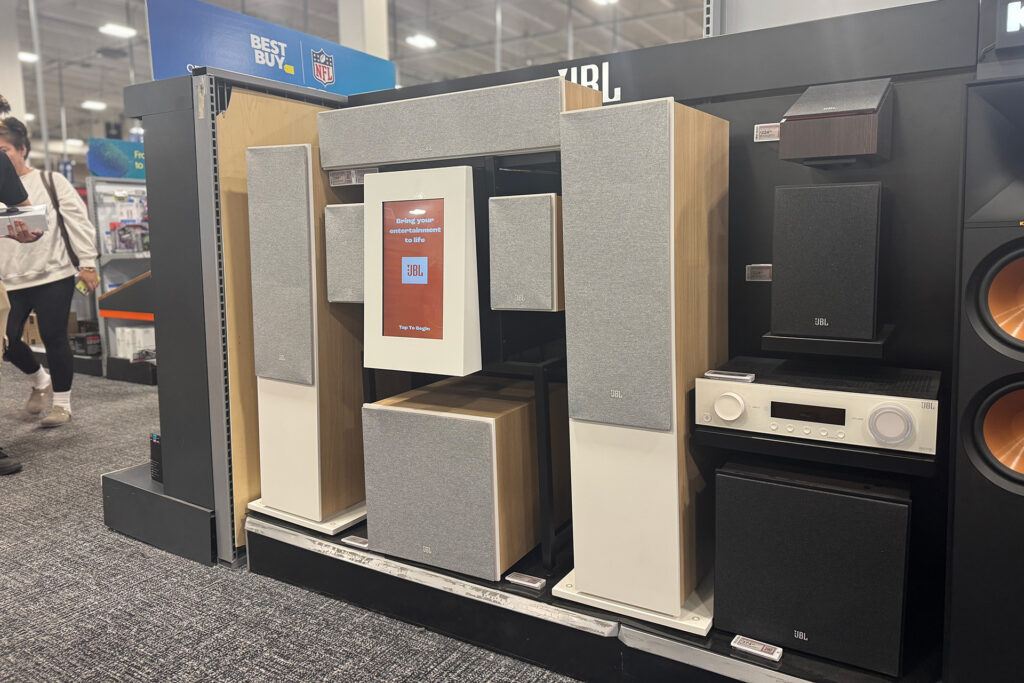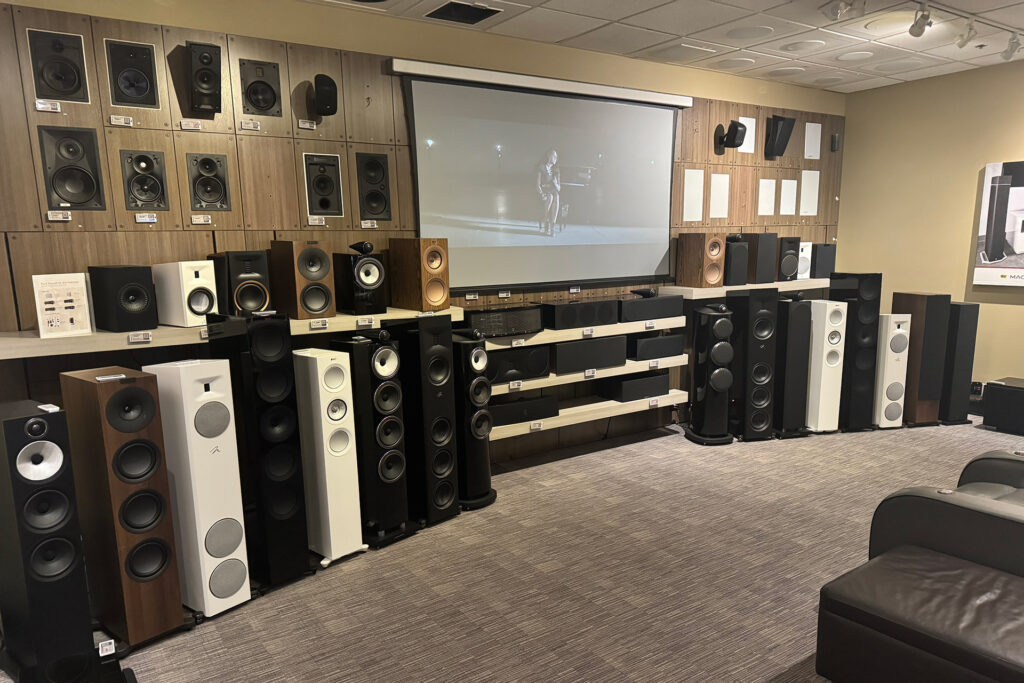Being exiled from our home because of the Palisades Fire, we are now living 125 miles south in San Diego, which in a matter of days has jogged some long-forgotten, geographically specific audiophile memories. When I was in Music and Business school at USC, my college girlfriend lived in North County San Diego, thus I was down this way every other weekend, and I just loved it. This part of the country has some of the best weather, most fantastic beaches, and is just an overall chill place to live. We are about to be signing a lease that will have us living down here for months and months, and we plan to make the most of the decisively different locale. The San Diego Zoo is just fantastic for the kids. A few days ago, I bought my son a package to do indoor skydiving. Legoland, the Wild Animal Park and perhaps even SeaWorld could be on the menu for our Things to Do in San Diego list. The coolest thing that appeals to those of us who now identify as Italians is model trains (Sinatra was the biggest collector of Lionel trains, as well as somebody my grandmother babysat back in Hoboken, New Jersey). The San Diego Model Train Museum is my absolute favorite attraction down here, as it is the most over-the-top model train display that I’ve ever seen. It sucks to be out of our house, but we will make the most of living down here for a little while.

Another San Diego-inspired thought that popped into my mind in recent days was the events that medical company Masimo used to hold when they were really promoting and trying to grow their AV brands like Denon, Definitive Technology, Classé Audio, Polk Audio, and more. The event that comes to mind most vividly is when the new D4 version of their Bowers & Wilkins speakers came out. The event was really well organized, with a luxury hotel room, a hand-curated collection of A-list audiophile press (present company excluded, as I realistically think I am more C-list, but thankfully I somehow got invited anyway), and fantastic meals, as well as full access to the Bowers & Wilkins design team. Solid, volume-matched listening tests were done in nicely treated and well-appointed listening rooms. This was a cool event that any audiophile would have loved to have attended.
The head of the Bowers & Wilkins design and engineering team is Andy Kerr. He’s in charge of almost 100 engineers, and takes little to none of the credit for the fast improvements that have been baked into the current slate of loudspeakers that the U.K.-based audiophile company now makes. He gives all of the credit to his team, but Andy is professionally badass. Andy also knows where the bodies are buried when it comes to the industry, Bowers & Wilkins history, and more. He’s dedicated to humbly getting the most performance out of any speaker design and then he and his team go back to eke out a little bit more performance. We like this guy.
Often these events struggle to get flowing, which is when one of the PR people might wink at me, indicating that they might want me to ask a compelling, discussion-starting question. That was the situation here, and I am no introvert, so I asked Andy a question that was juicy enough to give him a moment to pause. My question was: Bowers & Wilkins speakers for a generation had yellow Kevlar drivers that were visually differentiated from every other speaker in the audiophile world. They benefited greatly from the implied bulletproof nature of their midrange drivers (and no, you can’t go shoot a Bowers & Wilkins speaker with a .9mm and expect the round to repel elsewhere; if you shoot your speakers with a gun, even with Kevlar drivers, you will destroy your speakers), but the color alone was a key visual differentiation. So, in the end, Andy, how hard a decision was it to give up on the yellow drivers at Bowers & Wilkins?
Well, after a nine-month pregnant pause and a knowing glance my way, Andy started his answer. I need to paraphrase here, but basically, he said that the decision was agonizing for the company, as well for as the design team. The new gray woven driver material was simply better in terms of performance, more than a generation after Bowers & Wilkins first came out with a Kevlar driver in one of their speakers. Additionally, other speaker companies were using Kevlar drivers and/or yellow drivers, which kind of made that market position a little less valuable. That logic made sense, but I asked a follow-up question, which was: Why don’t you color the new, woven material yellow? But I think I had already made my point with the first question, and it was time for me to politely shut up.

People Believe What They See More Than What They Hear
This is just fact. Ask anybody like me who has sold big home theater systems, as well as reference-level audiophile systems, and we will tell you that it is a lot easier to sell a videophile product than an audiophile one. The reason is that people believe what they see more than what they hear. It is just human nature, and it is worthless to fight.
With that said, being able to differentiate your loudspeaker brand in the marketplace is tough, in that most audiophile components are either black, white or silver rectangles. 800 Series Bowers & Wilkin speakers are not anywhere near that level of bland industrial design. The 800 Series speakers have a more organic shape. They have a radical, long (and heavy) tweeter, mounted on the top of the transducer. They have stock paint finishes that truly glow, thanks to the use of 2000 and 3000 grit (really, really fine) sandpaper via robot sanders that result in a glossy paint finish that rivals a McLaren. Bowers and Wilkins also offer to paint their speakers in gorgeous colors, and even provide some very exotic wood finishes, especially if you invest in their Signature Series models. They also will paint your speakers in any designer paint that you like, assuming that you are willing to wait a few months. These modern speakers don’t just have yellow midrange drivers, and they look different. This performance evolution reminds me of when, in the late 1990s, Porsche finally abandoned their air-cooled engines (at one point in my life, I owned a C2, C4S as well as a 911 Twin Turbo of that air-cooled era, and should have kept one of them, as Dan D’Agostino often reminds me). The new water-cooled cars are better, faster, and more efficient. They just aren’t what many Porsche enthusiasts think make a “Real 911,” even if the current 911s are simply superior cars, just as Bowers & Wilkins speakers in D4 are simply superior to past, more visually differentiated speakers.

Who Else Differentiates Their Speakers and Components in the Audiophile World?
When it comes to colored drivers, the one speaker that comes to mind in terms of a visual like Bowers & Wilkins’ yellow drivers is Klipsch. If Klipsch isn’t an audiophile darling, they are certainly an iconic American brand. Their custom woodwork can be spectacular. In many ways, they are to speakers what Gibson and Fender’s custom shops are to guitars. What makes a modern Klipsch speaker look like a Klipsch speaker are the copper-colored drivers. Not just the midrange drivers, but all the drivers that make it visually obvious what type of speakers that you are seeing.
There are many mainstream speaker companies that have borrowed a trick from the big-dollar audiophile speakers, as they now offer colorful, vibrant and/or elegant colored loudspeakers. KEF does a good job with this, as you will see at any Magnolia Store inside of a Best Buy. PSB’s new powered iQ Alpha speakers come in a rainbow of colors. Online speaker gem Orb Audio offers their spherical speakers in a rainbow of colors, as well as metal finishes like copper, brushed aluminum, and many more. MartinLogan’s ESL speakers are slim, tall and visually transparent, which makes them look very different than any other speaker in the audiophile space today.
Some audiophile loudspeaker companies make their statement with the industrial design of their speaker. Vivid Audio, designed by Bowers & Wilkins’ former top designer (aka: the guy who designed the Nautilus), makes speakers in South Africa that are truly wild-looking. Not just colors, but Teletubby-like physical shapes. The speakers are fantastic performers, but they are not for every décor. Estelon speakers from Estonia have been an instant audiophile hit, as they are organic, tall and sleek in their modern industrial design. Their narrow footprint for a truly high-performance audiophile speaker is a bid differentiator in the marketplace.

Some Final Thoughts on Visually Differentiated Audiophile Speakers …
Audiophile electronics brands are getting into being visually differentiated in recent years, and in some ways, in the long, long ago of audiophile history. Tell me that when you look at a Steampunk monoblock power amp designed by Dan D’Agostino that you don’t want one even before the first note plays? How many OG audiophiles dreamed of being able to watch the blue-ish green meters on a McIntosh tube amp? That would be truly countless. Even older audiophile products appealed visually or physically in ways that might not have affected the sound, but sure impacted the sales. A Mark Levinson No. 31 Compact Disc transport comes to mind, with its auto-closing lid. How about a B&O pencil-like CD transport? That might not have performed like a Mark Levinson, Meridian or Forsell CD transport, but in its day – it was one hell of a visual statement in your room.
In the end, you should love your audio system, not just the way that it sounds, but everything about it. All of the little details. That might include how the system is built, who made your gear, and the technology behind your sound. There’s more to a truly evolved audiophile system than just fantastic sound. There’s more to selling audiophile components than pure sound. Those yellow drivers moved speakers over other very strong competitors in retailers in every major city around the world. Finding a way to inspire an enthusiast consumer to make an upgrade or investment in his or her system has its value as well, in that keeping the companies that push the limits of music playback technology making sales is to allow them the research and design budgets needed for us to make meaningful gains in the future.
Do you remember the yellow drivers in B&W (that’s what we called them back then before they had an automotive deal with BMW which is understandably confusing)? Does the way a speaker look factor into your investment or are you a total sound purist? We’d love to hear from you in your comments below.




I don’t know many people that listen to music with their eyes closed all the time. Few can concentrate solely on the music that long, short of lying in a completely blacked out room. We are beings designed to react to visual stimulae for our own survival and colours (colors!) play a significant part of that. Red often signifies danger (in many cultures) for example. So colours produce reactions and hence feelings.
It follows that both the colour & shape of equipment including speakers can produce a positive feeling for the listener as well as a negative one. That said what initially attracts can end up having the opposite effect. Think of the fashion trends than run with clothing!
My current speakers are a matt Black, but it is the shape I find appealing as much as the sound. Hence when I listen, I do so feeling a positive response regardless of what I’m listening to. The manufacturer didn’t offer a colour option apart from White, so I decided based on my colour preference based on that which made me feel the best.
Absolutely! I think most would say it doesn’t but I know aesthetics definitely factor in for just about everything in life, not just speakers. Whether it’s colorful drivers or gorgeous cabinets these things are sitting in your room (unless they’re in-wall/in-ceiling) so you see them even when you’re NOT listening.
Colorful drivers are a differentiator – when I got into the hobby I went from boring black NHTs to Paradigms with their milky midrange and then to B&Ws with their yellow Kevlar.
I’ve since enjoyed several modern KEF models with various color drivers and cabinet finishes and think it definitely adds to my enjoyment of the system.
All of the speakers I currently have in-house feature traditional rectangular boxes so for my next set I’m looking to something cool – B&W’s 803 D4 or KEF’s Blade 2 – and I’ll sure as sh#t be getting them in something other than black!
My HT system is based on the B&W 805S (similar to the one pictured), and SCMS, they do have ‘yellow’ drivers, but I leave my covers on. While I do want more than a black box, and appreciate the natural cherry finish of the B&Ws, I don’t want to see drivers (nor risk their damage).
My 2C system features Magnepan 20.1Rs, who’s appearance definitely makes a statement, but in a way I would call ‘understated elegance’; they also feature a (custom) natural cherry finish I did myself (as opposed the the standard ‘red’ cherry). In our large vaulted ceiling room I also appreciate the sheer physical impact of the Maggies, as they fit the scale nicely (my wife loves them as well).
As I’ve considered combining the systems, I’ve struggled finding a more conventional L/R to replace the Maggies, that would both perform well, and make a comparable visual statement. Sonically, the B&W 802D2 would be a perfect match to my surround and heights, but they’re a bit short, and my wife considers them too ‘R2D2’. It seems an entire speaker system replacement would be needed
So, I do care about how my speakers look, but it’s more about the build and finish, I lean toward a quality wood, though paint isn’t out of the question. I rather not see drivers, and just find them distracting.